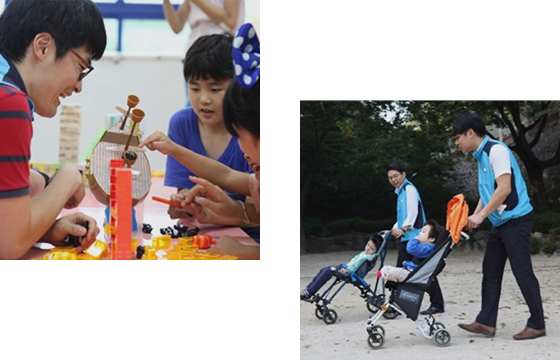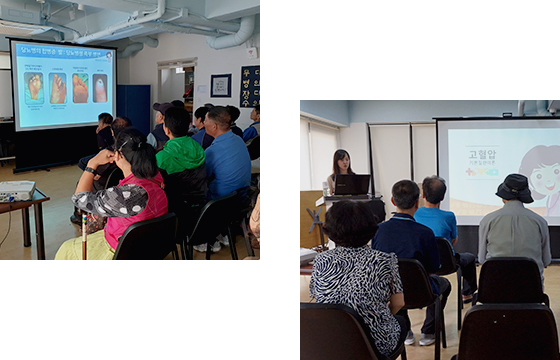Community Service
CKD Holdings wants to make the world a better and healthier place for everyone.
CKD Holdings will walk beside you to create a happier community.

Community Contribution Activities
Since 2012, employees have participated in volunteering activities once a year, taking the lead in sharing activities for neighbors and local communities. We visit and serve the social welfare facilities in Seoul, Yongin, Ansan, Cheonan, and Asan where our major business sites are located. Going forward, CKD Holdings will continue to work together with the local community to ring the ‘bell of hope that is filled with love’.

CKD Family Volunteer Group
CKD Family Volunteer Group consists of employees’ family members, and they deliver a great deal of love through regular volunteer activities which occur once a month. In particular, they learn about family communication, consideration for others, and fostering a sense of community with neighbors by participating in these volunteer programs.

New Hires Community Service
As part of the job training program for new hires, all new hires participate in briquette sharing, environmental cleanup activities, cultivation of Bukhan Mt, helping rehabilitation facilities for the disabled, and reorganization of the National Cemetery. Participating in these activities help them build a sense of community and teach the new hires the importance of corporate social responsibility as they start out their careers.

Blood Donation
In order to help spread blood donation culture and exercise the sharing of life, we have been conducting regular blood donation campaigns every summer since 2009 as blood supply is low in the summer months. Blood that is collected from five different locations is then given to the children who are fighting against childhood cancer.

Jjogbang Village* Health Care Education
Since 2014, CKD has been visiting Jjogbang Village located in Dongja-dong
to conduct health care education.
Professional instructors from CKD’s
academic team have been trying to improve the quality of life of the locals
in the village by providing education and information that is specific to the
diseases that are prevalent within the village.
* A very low-income neighborhood composed of houses and rooms significantly small in size.

